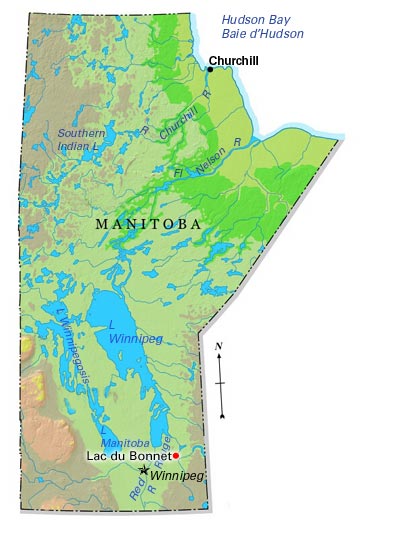Selkirk, Manitoba, incorporated as a town in 1882 and as a city in 1998, population 10,504 (2021 census), 10,278 (2016 census). The City of Selkirk is located on the west bank of the Red River, 29 km north of Winnipeg. The city was named after Thomas Douglas, Fifth Earl of Selkirk.
History
Long before Selkirk was founded, the area was occupied by the Anishinaabe and the Saulteaux people. In the mid-1800s, a community of Swampy Cree and Saulteaux established an agricultural settlement known as St. Peter’s Parish (later St. Peter’s Reserve). Under pressure from white settlers and the Canadian government, the community eventually relocated about 130 km north to the newly opened Peguis Reserve. (See Reserves in Manitoba, Numbered Treaties, Treaties 1 and 2 and Peguis.)
A frenzy of land speculation and building began in 1875 with proposals to route the Canadian Pacific Railway across the Red River in the Selkirk area. In anticipation, settlers and speculators bought up property and built on both sides of the river on land that had been reserved for Indigenous use in Treaty 1 (1871). Winnipeg gained the rail crossing instead and Selkirk went on to become a river port and centre for shipbuilding, lumber, fish exports and agricultural services.
Economy
Manitoba Rolling Mills (Canada) Ltd (now Gerdau Ameristeel Manitoba), producer of steel products and the town's major employer, was established in Selkirk in 1913. Steel, light manufacturing, the service sector and government administration are key parts of Selkirk's economy today. The city has an industrial park, a shipyard, a regional mental health centre and a regional secondary school.
Culture
Selkirk is near two national historic sites, Lower Fort Garry (designated in 1950), and the St Andrews Locks on the Red River (designated in 1990). Also nearby is the Oak Hammock Marsh, a Ramsar site (designated in 1987) and one of the premiere bird watching areas in North America. (Ramsar sites are designated “wetlands on international importance.”) The city has a marine museum and celebrates its Scottish heritage in July with the Manitoba Highland Gathering.
Population
According to the 2021 census, most of Selkirk’s population are of European origin, most notably Scottish (21.7 per cent), Ukrainian (19.5 per cent), English (18.5 per cent) and German (15 per cent). Selkirk is also home to a large Indigenous population (16 per cent).

 Share on Facebook
Share on Facebook Share on X
Share on X Share by Email
Share by Email Share on Google Classroom
Share on Google Classroom


